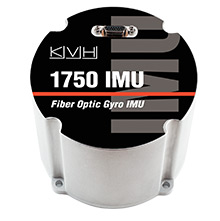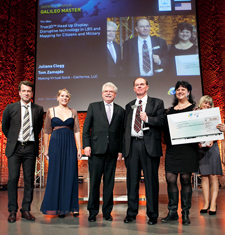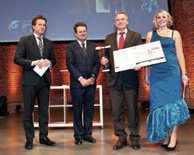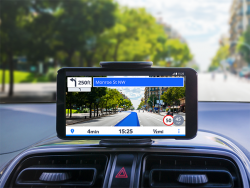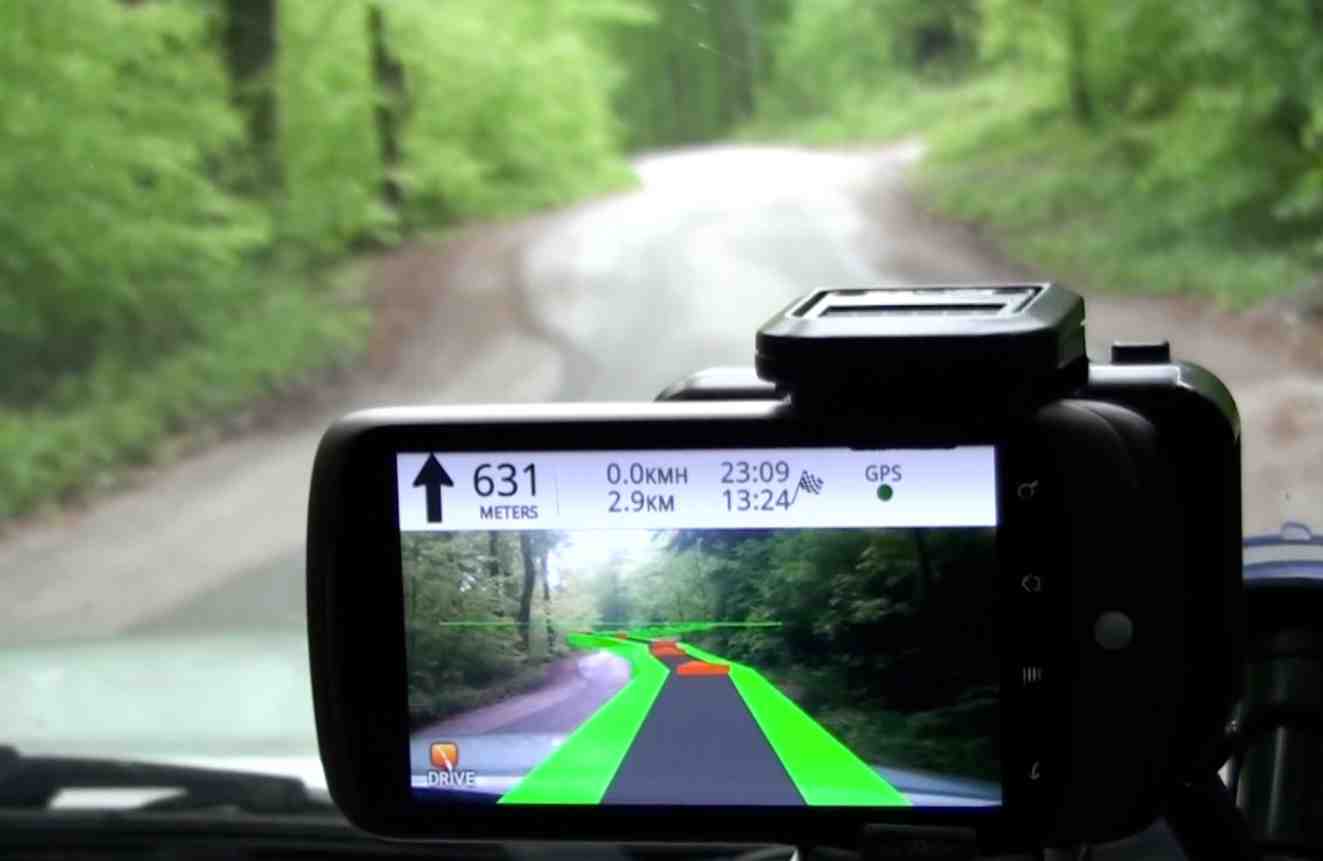
A Salzburg, Austria–based start-up company, Mobilizy, took home the €20,000 grand prize in the European Satellite Navigation Competition 2010 (ESNC 2010) for its revolutionary navigation system Wikitude Drive, which uses augmented reality (AR) to superimpose driving directions over live street video on smartphones.
A Salzburg, Austria–based start-up company, Mobilizy, took home the €20,000 grand prize in the European Satellite Navigation Competition 2010 (ESNC 2010) for its revolutionary navigation system Wikitude Drive, which uses augmented reality (AR) to superimpose driving directions over live street video on smartphones.
Wikitude Drive also won the prize for the best application leveraging EGNOS, the European satellite-based augmentation system that aims to add even more speed, precision, and reliability to GPS. The innovation had previously won the NAVTEQ Global LBS Challenge.
The awards were among the six special topic prizes and 21 regional competition winners announced today (October 18) at the ESNC Awards Ceremony held today (October 18) at der Residenz in Munich, Germany. A secure mobile-voting application, eVOTZ, won the USA Challenge, the ESNC’s North America regional partnership, sponsored by Inside GNSS magazine and NovAtel, Inc.
Organized by Anwendungszentrum (Space Applications Center) GmbH Oberpfaffenhofen, Germany, the ESNC began seven years ago as the Galileo Masters program designed to promote innovations in applications of the European GNSS system. The competition was later expanded worldwide to cover all GNSS systems and augmentations, although the top prizewinner is still referred to as the Galileo Master.
Wikitude Drive uses AR in combination with global maps to superimpose directions onto a live smartphone video stream of the driver’s surroundings, enabling a drive to easily recognize and follow the suggested route based on real-world imagery instead of abstract maps. Mobilizy is preparing to release its Wikitude Drive system onto the market at the end of October.
“It will provide a new navigation experience. There’s no other comparable augmented reality system on the market,” says the company’s founder Philipp Breuss-Schneeweis.
The system works by attaching an enabled smart phone on top of a vehicle’s dashboard looking at the road. The application then overlays video captured through the camera with driving instructions. This allows users to literally drive through their phone, watching the road even while they are looking at directions.
“The prizes will help us with bringing the system to market,” Breuss-Schneeweis said, adding that it will enable the company to network and build partnerships with other companies. “In the future we hope to be able to add Wikitude Drive to other navigation systems and add new features.”
At the moment Wikitude Drive works with the commonly used Android platform for smart phones, but the company is hoping to extend this to others in future, including the Apple iphone.
Breuss-Schneeweis emphasized the added accuracy that EGNOS offers, as well as the importance of European-level support in advancing market development of GNSS applications such as Wikitude Drive.
Although Wikitude Drive works very well with the GPS system available today, the variable accuracy of GPS makes it impossible to consistently superimpose driving directions onto real streets.
“By integrating EGNOS – the European Geostationary Navigation Overlay Service – this application will really take off with improved accuracy, faster positioning signals, and more accurate altitude detection,” said Heike Wieland, acting executive director of the European GNSS Supervisory Authority (GSA), who presented the prize for the best EGNOS application to Mobilizy. “I am curious to see how augmented reality will revolutionize the market for pedestrian and in-car navigation,” Wieland added.
Second place in the overall ESNC competition went to Helmut Drewes of the Agrista company (Oberpfaffenhofen), for an online platform that uses remote sensing data to help farmers gain access to investors and increase food production levels.
Patrick Henkel and Patryk Jurkowski of the Technische Universität München won third place for a carrier phase receiver system that features extremely reliable integer ambiguity resolution. Taking home fourth place were Jakob Jakobson and his team from the National Space Institute of the Technical University of Denmark with a system that facilitates fast access to defibrillators in cases of sudden cardiac arrest.
Special Topic Prizes
Six developers were recognized by ESNC partners from research and industry for winning solutions in the special categories.
Ralf Nejedl, Director of T-Systems’ Galileo programme, and Dr Thomas Beer, GMES Policy Coordinator in the GMES Space Office, European Space Agency (ESA) jointly awarded the GMES Special Prize to Helmut Drewes from the Oberpfaffenhofen-based Agrista GmbH for an online platform that uses remote sensing data to support farmers in gaining access to investors. This use of satellite data in a GMES core service area reduces the risk of funding agricultural projects, thus making more funds available to farmers and increasing food production levels — especially in emerging markets. The application also came second in the overall ranking of the competition.
The €10,000 innovation prize of the European Space Agency (ESA) went to Rafael Olmedo and Luis Burillo from INTA, Spain’s space agency, for the NEPA project, which proposes the use of low-cost and mobile wireless sensor nodes to monitor water quality. During operation, NEPA nodes will measure water parameters and position coordinates to assess fluctuations in quality, as well as their time and location. The award was presented by Frank M. Salzgeber, head of the ESA’s Technology Transfer Programme – along with the Madrid regional prize.
Technology marketing director Dr Rolf-Dieter Fischer of the German Aerospace Center (DLR) awarded his agency’s prize to La Sapienza University in Rome for a novel strategy to perform real-time retrieval and estimation of displacement and waveforms based on high-frequency (1Hz or more) carrier phase observations collected by a stand-alone GNSS receiver. The innovative algorithm can be applied, for example, in earthquake detection (and related early-warning systems for tsunamis) and structural monitoring.
Marc Naddell, vice president of partner and developer programs at NAVTEQ, recognized the application Parking Dialogue as the best location-based service submitted this year, giving the winning company Dialogues Laboratory (the Netherlands) the chance to participate in a 12-month incubation programme with the NAVTEQ Network for Developer (NN4D). Parking Dialogue will automate paid parking by using location coordinates to identify parking areas and all of the corresponding parking providers, thus enabling drivers to start and end parking sessions with a simple click.
For the second time, the Baden-Württemberg Forum for Applied Satellite Navigation and Mobile IT (Forum SatNav MIT BW) presented an award that recognizes the ESNC’s best security-related solution for the transport and logistics sector. The official honours were left to board member Dr. Rolf-Jürgen Ahlers, who introduced DAGObert (DAngerous GOods Coordination Through Location-Based Road Traffic Management. The purpose of DAGObert is to prevent vehicles transporting reactive hazardous materials from meeting at traffic bottlenecks. The award went to Wolfgang Inninger of the Fraunhofer Institute for Material Flows and Logistics (IML) and Gerd Waizmann of proTime GmbH.
Living Lab Awards
Thorsten Rudolph, managing director of Anwendungszentrum GmbH Oberpfaffenhofen, awarded the first GNSS Living Lab Prizes for the best GNSS-related products and services ready to be tested and implemented in a suitable Living Lab. Three €10,000 prizes were awarded in the categories energy, health, and media.
Energy: Stef and Selene Kolman, Bernard Veltien and Tomas van der Wansem from the Netherlands have designed a way to leverage on-board diagnostics (OBD, a universal car-computer system) and realworld data to display on-location vehicle emission profiles on mobile phones instead of referring to the standard specifications of car energy labels. Their solution, OpenCarData, taps into a vehicle’s OBD information flow, transmits it in real-time to an open-source system, and thus provides a real-time "health check" of an individual car or an entire fleet.
Health: Cardiac Power Monitoring (CPM), developed by Volker and Johannes Tank from Kreative Technologie LWU UG in Germany, is a novel technique to determine and monitor the specific physical heart power of any person performing physical endurance exercise. CPM accompanies preventive and rehabilitative physical training with a GNSS-based management system that provides high-precision position measurement, mapping, and tracking of a plurality of training courses and types over training periods.
Media: Dylan Seychell, Alexiei Dingli and Tunde Kallai from Malta have designed a concept for a Digital Information Navigation and Orientation System for Smart Cities (DINOS). DINOS will be a hybrid system that collects and manages information and aids users travelling in cities by making use of localisation services. It will incorporate an intelligent information system that automatically manages the status of queues at attractions by determining which queue is moving the fastest, thus distributing visitors among different places of interest.
Regional Winners
Twenty-one regional winners were selected by distinguished panels of judges in the ESNC’s partner regions. At today’s ceremony, awards were presented in six thematic sections.
Public & Social Services:
Mamadou Diop and his team from the Group ISEG and International University for African Diasporas (UNIDAF) in Senegal was named the first winner of newcomer region Arab Middle East & North Africa for mLearning4Africa, an innovative platform that provides low-cost mobile learning services to African schools, universities, and corporations in remote areas.
Philipp Neuhaus from the medical faculty of the University of Münster persuaded North Rhine-Westphalia’s jury with a Galileo/GSM-based system that locates persons in distress. The system combines GSM signals of buried persons’ mobile phones (e.g. in case of an earthquake) with satellite navigation and communication to determine the areas where buried persons might be found and which have yet to be scanned.
Jakob Jakobson and his team from the National Space Institute of the Technical University of Denmark were named the winners of the Danish-Swedish region of Øresund for their Cardiac Arrest Alert and Localiser (CAAL). In case of sudden cardiac arrest (SCA), CAAL supports those helping the victim in finding the closest publicly accessible automated external defibrillators, thus saving crucial time before an ambulance arrives. The idea was also selected as third runner-up in the overall ranking of all 30 business ideas awarded in this year’s ESNC.
The winner of the first USA Challenge, Elliot Klein, was recognized for eVOTZ – an interactive, authenticated, private, and location-aware application that combines cloud-computing with cell tower triangulation and other GPS and SIM card technology to transform mobile devices into trustworthy voting machines for any election process.
Ángel Martínez-Cavero and his team at the Institute of Technological Applications Through Advanced Communications (ITACA) were selected as the regional winner of Valencia. The concept ADRIANA (ADvanced RIsk Alerts in a Social Network Application) presents an efficient and low-cost tool that enables police and fire departments, civil defence forces, and other public authorities to alert the population quickly to unexpected natural catastrophes. This idea is based on a social network that users can access from anywhere at no cost.
Location-Based Services:
Dr Klaus Dibbern, Benjamin Kirschner, and Michael Hübl from flinc AG won Hesse’s regional prize with their ridesharing application flinc, which assigns free seats in cars within a few seconds through realtime analysis of traffic movements. It combines GPS and location-based capabilities with social networking to offer a dynamic, safe, and automated service that gets you from A to B.
South Holland’s regional award went to Ferdi de Bruijn, Teun Hoevenaars, and Jon Reijneveld for ReMood, a mobile barometer for visitors’ moods at festivals. ReMood directs visitors towards their preferred ‘moodspace,’ where they can find like-minded people. ReMood can also be instrumental in monitoring the position, density, and movement of crowds, which could increase visitor safety.
Rafael Olmedo received yet another award for his second solution, a mountain risk management system. The Basque region of Gipuzkoa chose SafeMountain as its best solution due to the way it promotes the use of the GPS smartphones as advanced personal terminals to make people aware of the risks in particular environments, as well as to record and provide information on the nature and location of incidents that occur.
Regional competition newcomer Lithuania awarded Žydrunas Andruška, Mindaugas Zarumskis, and Vaidas Serpetauskas of TOBE GPS for their GPS Tracker Belt, which looks so much like a regular belt that criminals can miss it during kidnapping attempts. It can also be used by people with Alzheimer’s disease, who often forget to carry any kind of electronic device.
Prague’s regional award went to a consortium of three Czech companies: Jaroslav Jansa from Immobiliser Central Europe, Filip and Augustin Sobol from Pramacom Prague, and Kamil Knotek from VIPRON. The awarded solution, DVB Disaster Monitor, aims to create an international system for monitoring emergency situations and to implement an information communication and localisation system that works reliably and independently, regardless of the scope of the disaster.
Martin Grauwiler and his team from ETH Zurich have been distinguished with the regional award for Switzerland for their airborne avalanche transceiver. alcedo is a lightweight mini-helicopter with four rotors that, combined with a state-of-the-art avalanche transceiver, searches autonomously for avalanche victims without the need for human involvement.
Dr. Tsung-Liang Wu and his team from the Industrial Technology Research Institute (ITRI) won over the Taiwanese panel of judges with a location-based method of credit card authentication. Double-Check identifies the location of the cardholder’s mobile phone via GNSS to make sure that the credit card is close to the cardholder. The service will be adapted for online shopping in the near future.
High Precision:
The regional award of the first Aquitaine Challenge went to Dr Bruno Desruelle, Philippe Bouyer, and Arnaud Landragin for μQuanS, a portable matter-wave gravimeter. This instrument will be capable of measuring vertical acceleration with a relative accuracy close to 10-9. One of the many interesting application examples for the utilisation of such sensors is in the monitoring of volcanoes, as the sensors offer high potential in detecting the precursory signals of eruptive activity.
Patrick Henkel and Patryk Jurkowski of the Technische Universität München won the Bavarian regional award and third place in the overall evaluation for a carrier phase receiver system that features extremely reliable integer ambiguity resolution with an error rate of less than 10-9. The proposed system can be used in any application where a rough knowledge of the distance between two receivers is available. One such scenario involves the secure stabilisation of loads borne by hovering helicopters, where the length of the bearing line is known.
Dr. Peter Valtink from MobilTec took home Niedersachsen’s regional prize for their indoor navigation service MPos. Based on the dead reckoning principle, MPos can be seamlessly integrated with any other positioning technique, such as Wi-Fi positioning (WPS) or assisted GPS. MPos is a software-only solution that minimizes power consumption by using a very low-complexity algorithm. MPos aims to meet the growing demand for precise and reliable location-based services in the pedestrian navigation market.
Earth Observation & Environment:
The regional prize of Baden-Württemberg went to Erich Franke from AFUSOFT for a satellite-based system that monitors animal populations in order to assess environmental quality parameters. The system monitors bats hunting insects in a biotope on a long-term basis to obtain information on the health of the biological system. The system can automatically identify and count bats in an area by combining ultrasonic analysis gear with direct satellite communication, thus reducing the effort required of human observers.
In selecting the winner of its regional prize, Lombardy chose Giacomo Mangani and Alessandro Cantore from Blue-Thread for their Marine Telepass, a modern and efficient access control system for marine areas with navigation restrictions. The possibility to remotely monitor the navigation status of regular visitors permits more selective, punctual, and cost-effective on-site control. The system also makes it possible to collect statistics on traffic flow, environmental and wildlife observations, and alarm handling, thus contributing to safety and environmental protection.
Road:
The Global Vehicle Traffic Monitoring System (GVTMS) proposed by Israel’s regional winner, Daniel Dobroszklanka of Satloo, is a proactive monitoring system that helps to control traffic violations, avoid traffic accidents, proactively detect potentially dangerous drivers, and recreate traffic accident scenarios offline, such as for insurance companies or legal process investigations.
The regional award of the ESNC’s first partner region Nice – Sophia Antipolis went to Ezio Malis and Manuel Asselot from Robocortex, who proposed the integration of an application that directs a driver to parking spaces available nearby into portable car-navigation systems. The idea fuses GNSS and computer-vision technologies, providing the user with an accurate on-screen map of parking spaces in the vicinity or a visualized path to the nearest empty spot.
Rosemary McClenaghan of TaxiZapp received the regional prize for the United Kingdom for a solution that connects taxi drivers and potential passengers. This taxi hailing application can be accessed via the Internet or GNSS-enabled smartphones and enables potential passengers to locate available taxis in their area that are registered with the TaxiZapp system. The closest responding taxi driver will then be assigned by the system to accept the ride.

